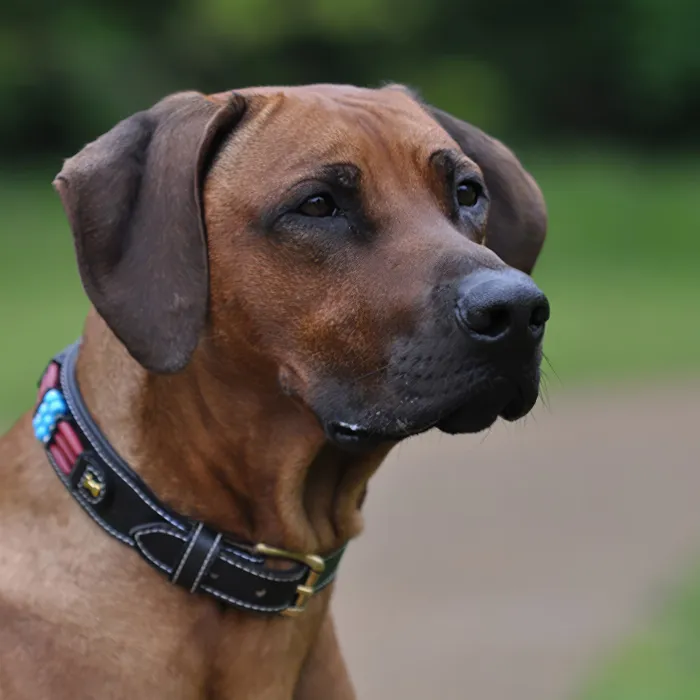Here is a brief overview of the points in the tutorial on preparing for and planning a shoot with animal models:
1. introduction
2. practice makes perfect
3. preparation and thoughts on image composition
4. making an appointment
5. equipment
6. instruction owner
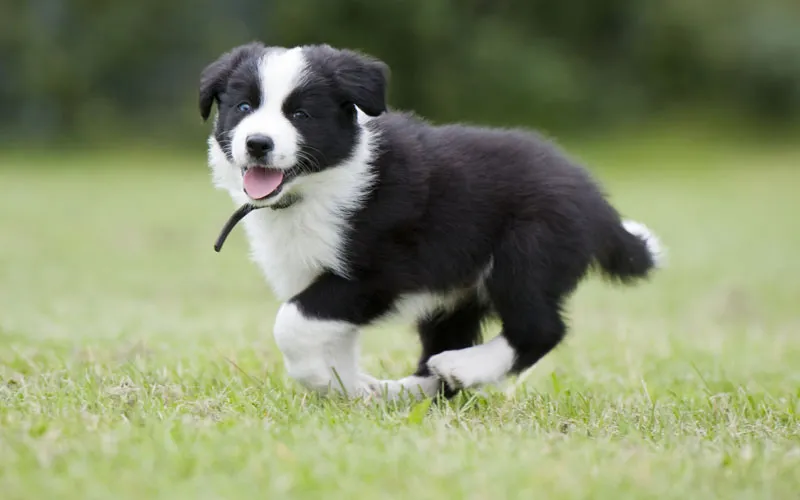
1. introduction
It doesn't matter whether you are planning a private shoot with your neighbor's dog or want to work as a commercial pet photographer: There are always a few precautions to take and a few things to clarify in advance. I've already covered a lot of this in my other tutorials. I've also already covered the preparation and planning of individual animal shoots, both indoors and outdoors. Nevertheless, I would like to briefly mention a few things here that you should always consider before your shootings. Enjoy reading the tutorial.
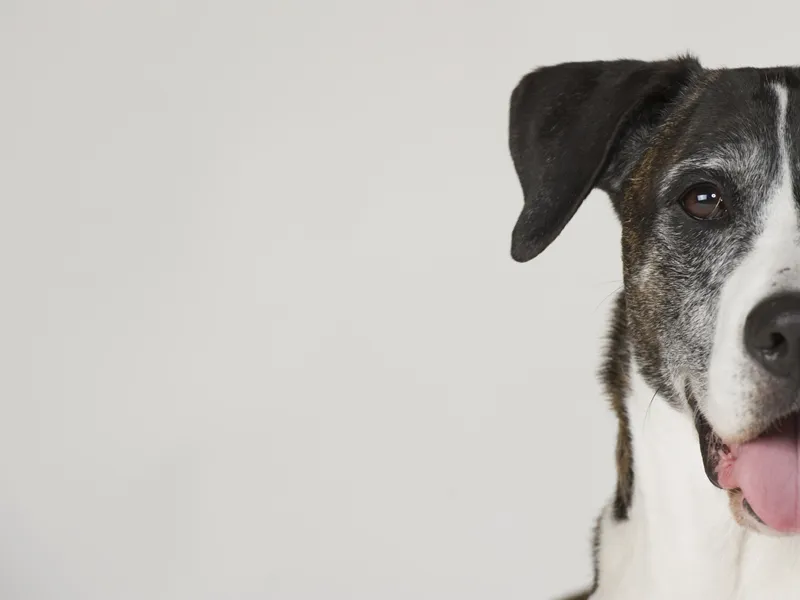
2. practice makes perfect
First of all, I would like to give you the tip to practise, practise and practise again. If you would like to get to grips with animal photography, then look for various models in your circle of friends and get started. It is important that you try out lots of things and also take photos without the sun and in poor weather conditions. Experiment against the sun and learn to get an eye for the background against which your dog or horse would stand out particularly well! Because the overall mood has to be right. And that brings us to the next point ...
3. preparation and thoughts on image composition
Outdoors
Time and again I tell clients - sometimes in vain - that a dark dog in front of a dark forest simply doesn't come across as beautifully as on a light-colored stubble field or a gravel pit. Walk through the world with your eyes open and observe your surroundings. Imagine your model behind you and, above all, how the blurred background matches the contrast of your animal.
So if someone calls you to photograph their animal, ask what color fur it has and what pictures they would like. If you can work freely, all the better. The next time you're driving through the countryside, simply look to the left and right and think about where you can put your model in the best light. Or choose a location for the shoot that is as versatile as possible and offers everything.
Looks good: A pretty Andalusian mare against a dark background. That fits well.
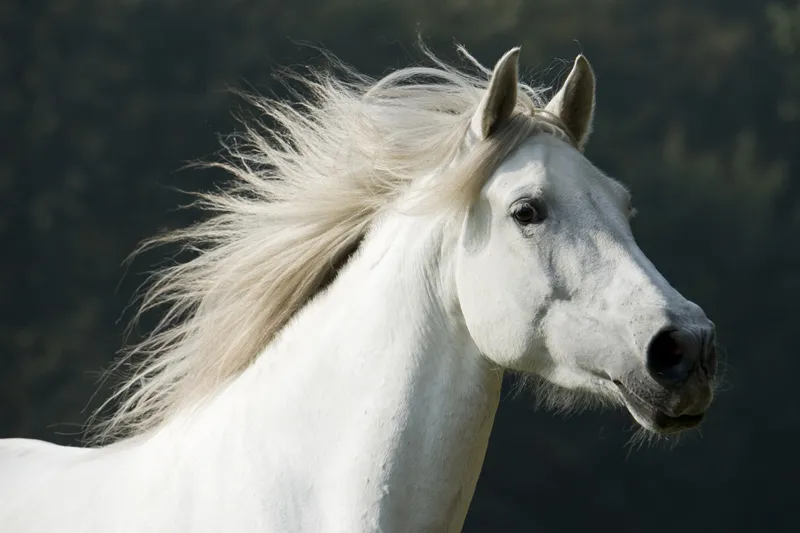
Doesn't look so good: a dark dog against a dark background.
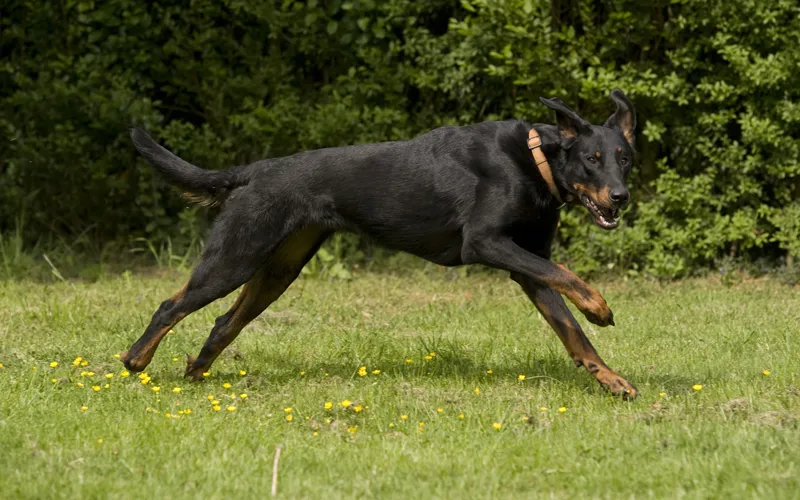
Light and dark in one picture. The beautiful autumn leaves are always a successful compromise.
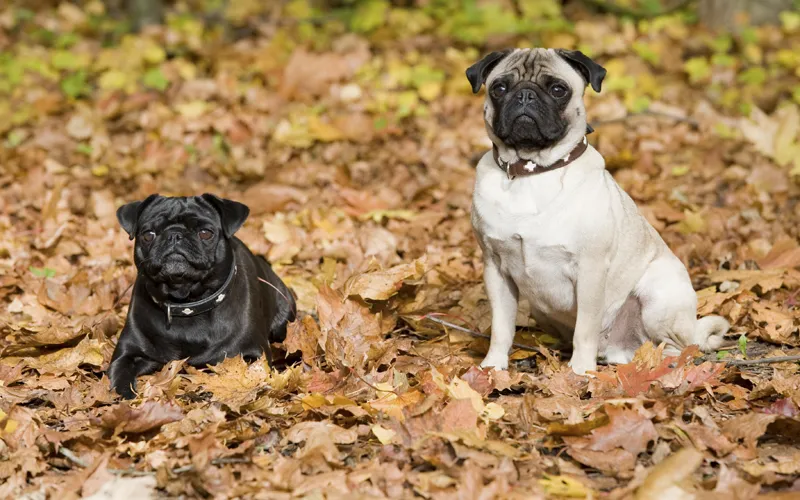
Also a mismatched pair under a cloudy sky on the banks of the Rhine.
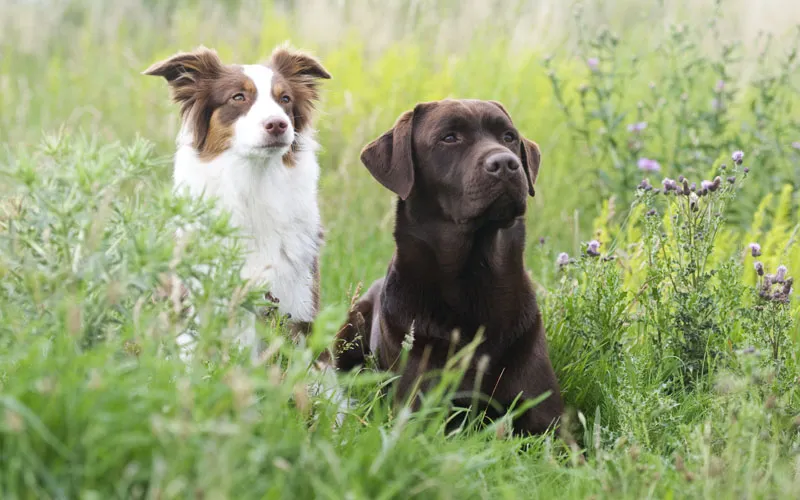
With dogs, you can also ask whether they are allowed to run free or whether they have to be photographed on a lead. Please note that leashes are compulsory almost everywhere, so be a little careful where you let your dog run free. If he has a bit of a hunting instinct, you shouldn't necessarily take photos next to the nearest duck pond.
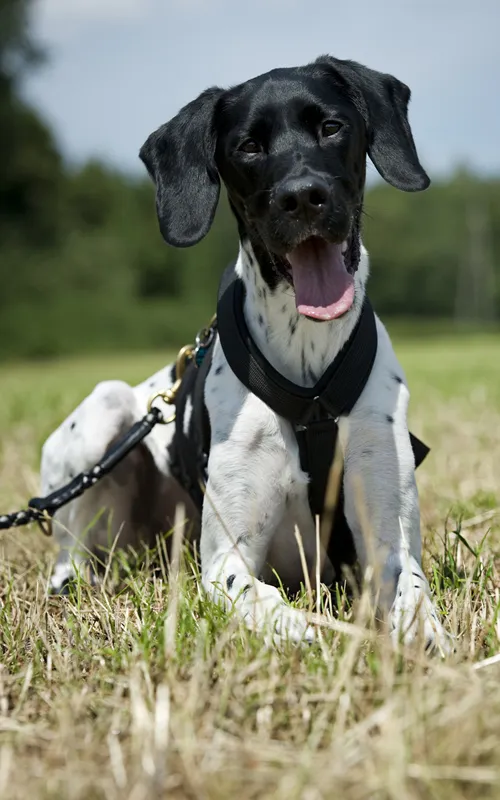
My cousin's pretty dog, for example, is not allowed outside without a lead. She is very frightened and without protection, she may run away in case of danger. Collar and lead are easy to retouch. A large harness, as in this case, is much more difficult.
It's even more difficult with horse shots! Unfortunately, none of us are called Boiselle or Slawik, otherwise we would have completely different ways of photographing horses. But of course we can't do it like these two ladies and there are many other successful horse photographers. We also have a real horse whisperer at PSD, Peter Becker, the horse snapper(http://www.unblind.de). If we were a celebrity horse photographer now, we would have the opportunity to photograph Frisians on the beach or Arabian horses in the desert. A dream, right?
As a "normal" photographer, we usually face an insurmountable problem. Our horses are in normal riding stables, where there are normal meadows that are fenced in, and sometimes there are terrible backgrounds behind the meadow. Houses, electricity pylons, a dark forest for a dark horse ... And where is there room for our creativity now? Not at all. You can usually choose from 2-3 meadows, but that's often it. It's also difficult with other things. Placing the horses freely in a colorful field (corn/blum/rape) is forbidden! So stay away from this idea unless you know the farmer. Otherwise you could get into real trouble.
Hardly any horse owner has such a good relationship with his horse that he can call it back like a dog when it has just run free over a nice area, so free running outside the fenced meadows is also out of the question. How frustrating! Nevertheless, you can take beautiful horse pictures if you work on them together with the horse owner! Kathrin Jung also creates wonderful horse photos with fantastic backgrounds. She is also a real pro when it comes to retouching and post-processing. It's always worth taking a look at her wonderful homepage.
It's definitely very difficult to get a horse right, at least with the options we have. It all looks quite good with portrait shots, but it's often difficult with movement shots. Especially if you don't live in the countryside and the stables in your area are all located without much greenery around them. In most cases, you don't have the opportunity to familiarize yourself with the stables beforehand, so you have to decide spontaneously and choose the right one for your happiness. When shooting for a friend, you can of course just try it out. With a client, of course, you need to know exactly what you are doing.
Here are a few pictures with different backgrounds:
This beautiful situation arose quite suddenly during the shoot. Unfortunately, you can see an unattractive fence in the background. Sometimes you have to live with what you get ... Often there is no time for the photographer to change position.
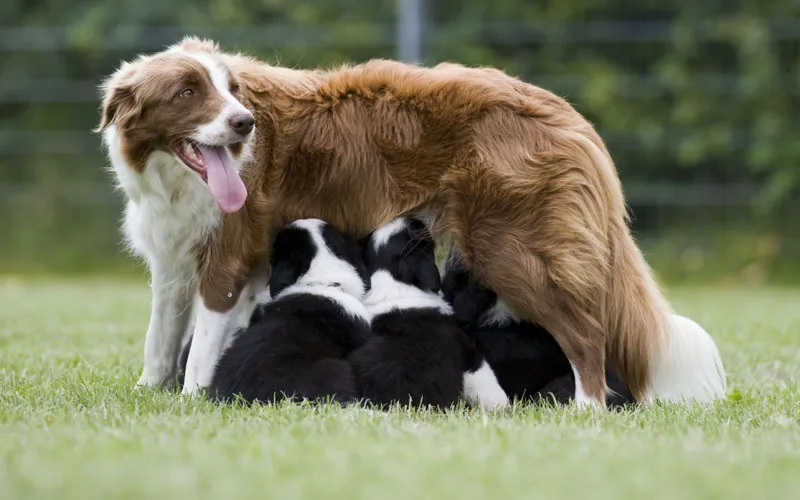
A beautiful day in the forest ... Take a bit of greenery in the foreground ... As always: get down to eye level! Even if you are dirty afterwards ...
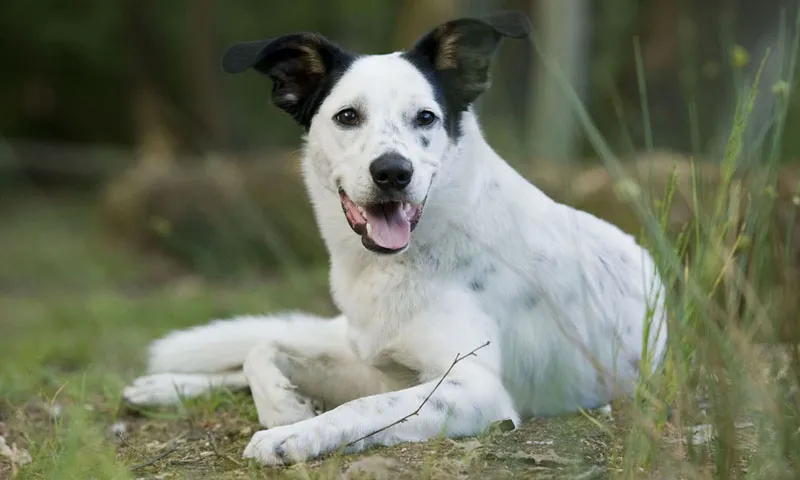
These fences have to go ...
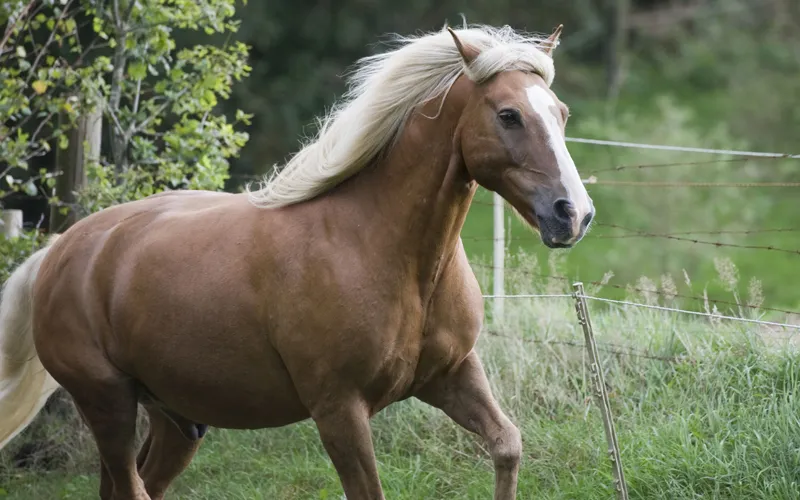
For cut-outs, the choice of background is not quite so important.
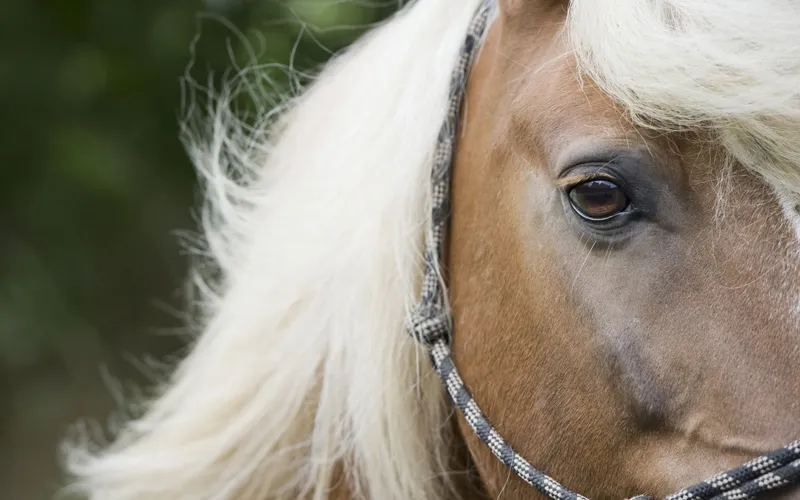
Beautiful subject, terrible background.
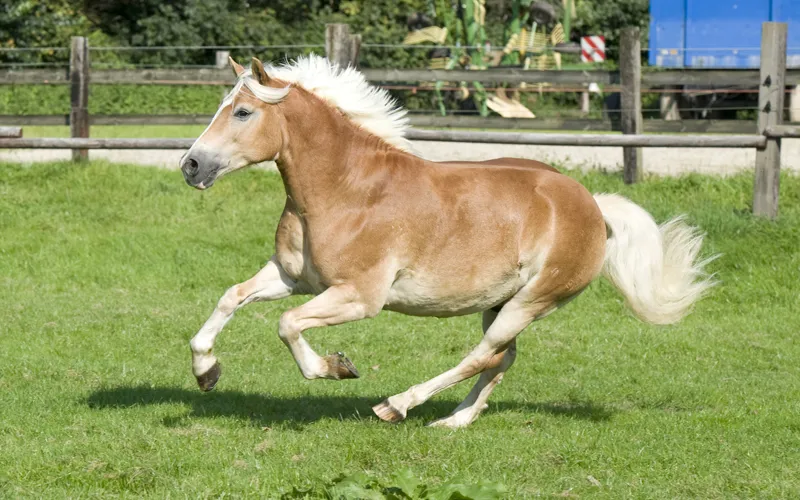
Another thing that comes into play with our outdoor shots: time of day and weather conditions. Phew ... That's the biggest problem of all. I have a simple rule: only take pictures of dogs and horses in motion and, best of all, all outdoor photos when it's sunny. And real sun. If there are too many clouds in the sky, you constantly have to move the camera and are more busy staring at the sky than taking photos.
Every time your horse or dog jumps perfectly across the meadow in front of you, another thick cloud appears in front of the sun. It's no fun working like that. But in the end, it's my customers who decide. I can only ever make recommendations. Regardless of whether you're a beginner or an experienced photographer, you'll be doing yourself a big favor in the beginning if you pack good weather for your outdoor shoots. You can concentrate on finding your subject and your model and don't have to keep fiddling with the camera. It's also much easier to take photos in the forest in sunlight. If we have a nice cloudy day and then have to go into the forest to photograph our dog there ... then it gets really complicated.
BUT you still need to be able to take photos in bad weather and even rainy weather has its charms. Practice taking photos in bad weather conditions. Even if your camera and lens are not so fast! Anyone can take a portrait of a person in bad weather!
But capturing a running dog in the forest when the light isn't right ... That's where we quickly reach our limits. But here, too, it's important to capture a successful portrait when our Fiffi pauses for a moment in the middle of his action. That's what we've been waiting for. It's hard to tell a puppy to sit still for five minutes until you've set up your camera ...
If you only ever photograph people or landscapes, you simply don't think about the fact that we're dealing with a model here. Who doesn't always sit still when we want them to or look straight into the camera when we tell them to ... Some time ago I went to a real professional photographer and had pictures taken of me and my dog. I was amazed that although he positioned me perfectly, my dog was sitting next to me with floppy ears completely inattentive with a long tongue and the photographer ... he took the picture anyway.
I pointed out to him that he should please speak to the dog or whistle so that he pricked up his ears, but nothing happened. That's when I really realized that animal photography is something completely different and requires completely different things. It's not more difficult, but it is different! How would a photographer know how to animate Fiffi if he doesn't normally photograph dogs? And honestly, don't you think there are photographers who don't know that they have to pay attention to the horse's ears, for example?
Indoors
It's easier in the studio. But here, too, you need background colors and, depending on the type of animal, a bit of "decoration", e.g. to make the kitten look a little playful. It's all a matter of taste. I wouldn't photograph a German shepherd on a Hello Kitty blanket either, but a French bulldog can have a few accessories. Why not? It suits her.
Here, too, I usually prepare for the models beforehand and know what color they will be. However, once I've been able to make a suggestion to the customer, I then work with them to choose the background and any decorations or accessories. It doesn't always have to be something kitschy. Wickerwork or plain scarves can also always come across beautifully in your image composition. If you're photographing animals in the studio, just have a regular look at a flea market. There are always beautiful things to photograph your models in front of or inside!
With these pretty Maine Coon babies, it's okay to have a bit of decoration!
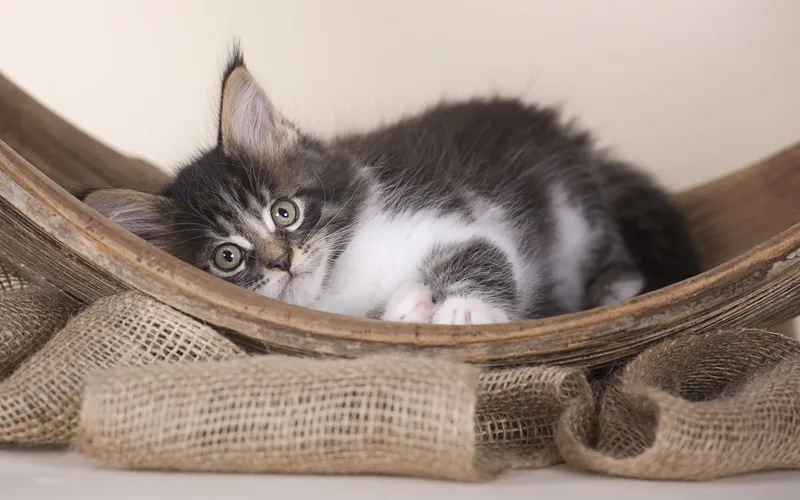
And while we prepare everything to shoot outside, he sits in front of the fireplace in the living room. Location found! So always be vigilant.
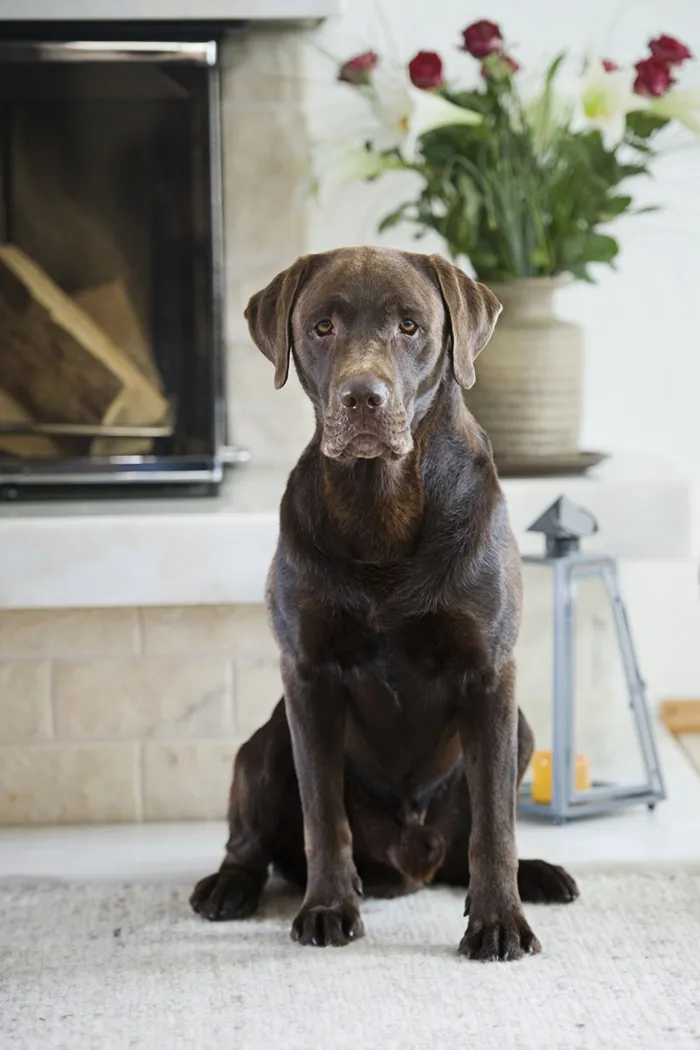
So let's keep in mind: If you find out about your model in advance and already have an idea in your head of how you want to photograph your animal model, you've already taken a good step in the right direction!
4. making an appointment
Information about the model
Important: What should be photographed? You need to know this for your planning. You can also think about the composition of the picture as described above. Discuss this directly with the owner. It is also important to find out whether the animal has any character traits that you should be aware of before the shoot.
There are many dogs that come from animal shelters and have a real phobia of strange things. In this case, you need to be very reserved right from the start and let the dog come to you.
There are also dogs that are very dominant or can snap out of fear. You also need to be careful here. Dogs have nipped me too, but it was always my own fault. I approached the animal without thinking and too impulsively or moved or touched it as a matter of course and ignored certain circumstances - as described above.
Horses also have very different characters. Some of them buck with joy in the meadow - even when they are being photographed - and they can sometimes kick out towards the photographer.
I had a two-year-old cold-blooded gelding some time ago. I was told by the owner that he was quite boisterous and would sometimes run people over. I smiled at this until he ran straight into my shoulder. So don't ignore the owner's well-intentioned advice! He knows his furry friend. No matter whether big or small ...
Wishes of the pet owner
Even if you want to practise and the shoot is only taking place for this reason, ask the animal's owner if they would like a particular idea to be implemented or if they have any special wishes. In most cases, the owners have not thought about this in detail, but it is not wrong if you persuade them to get involved!
These photos, for example, were an explicit customer request. It's also a nice idea to stage a dog in the studio. Especially simple.
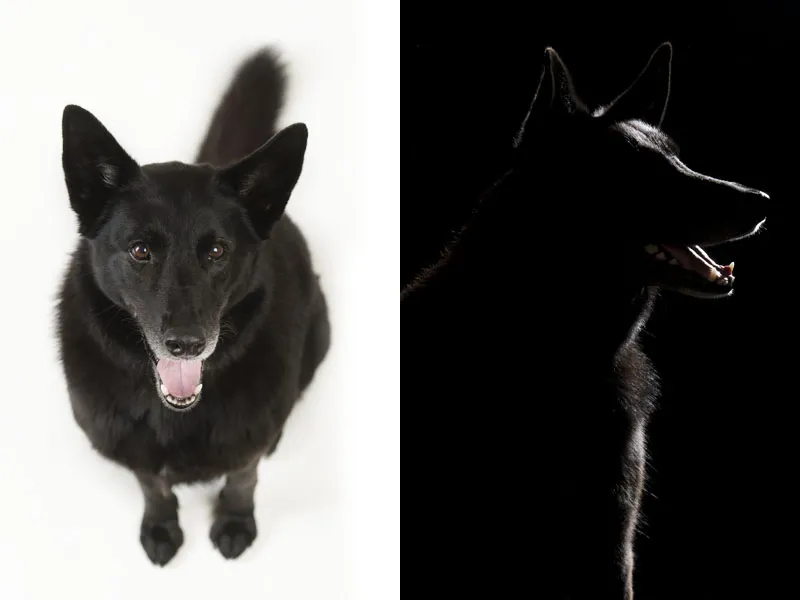
Weather and time
I've already mentioned weather as the most important factor when arranging an appointment. You could agree directly that you will only shoot in good weather and, if necessary, reschedule at short notice if the weather doesn't cooperate (which is unfortunately often the case in Germany). If it's not overcast or raining, you can take a few portrait shots to practise and choose the backgrounds and avoid any movement.
In summer, I try not to take photos at midday. In other words, photo times (in the sun, mind you) are between 8:00-12:00 and then again from 14:30/15:00. The evening sun also gives your photos a certain flair. You should therefore also take this into account when choosing your dates.
In the fall, for example, you can also take photos in the midday sun, as the sun is no longer so high! If you want a beautiful evening mood or even backlit shots, then of course choose a correspondingly late date with a suitable location!
Always pay attention to the position of the sun! Don't let the forest you have chosen as your background be in the shade or similar at the time you have chosen.
Here's another comparison: a shoot with a dark dog. Once with and once without the sun.
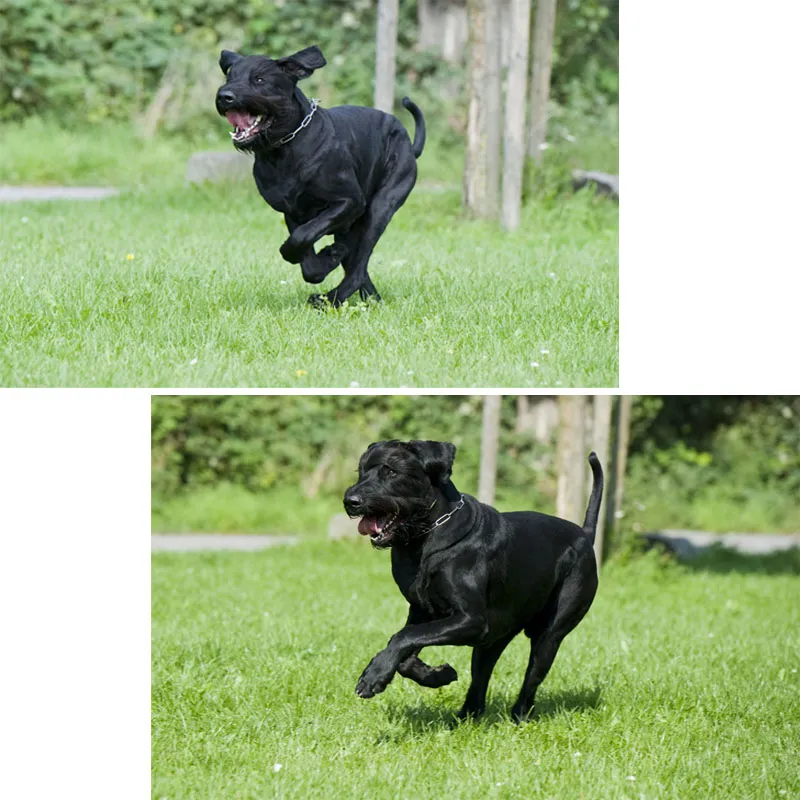
Choice of location
The choice of location depends, as described above, on the subject and on your wishes or those of the client or pet owner. Based on the information you have received, you can now browse your surroundings in your mind and think of a few nice places. A place where there are several nice spots is also a good choice. I often go to the Rhine in Duisburg.
There are bays and jetties with small and large stones, tall grass, trees, meadows with colorful flowers and also shady spots. Water and sand are of course the absolute highlight here. Everything is located in such a way that you can go for a nice walk and easily take 400 pictures with various different motifs in one hour. Here are a few excerpts from our last shoot there! You should always have insider tips like this in your area.
Border Collie Tylor on the Rhine:
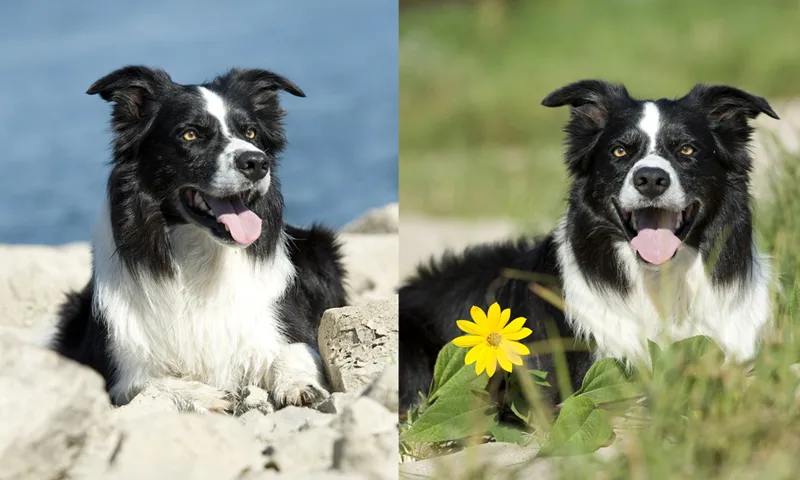
Just a few meters away a beautiful flower meadow ... Colorful Aussie in a colorful bed ...
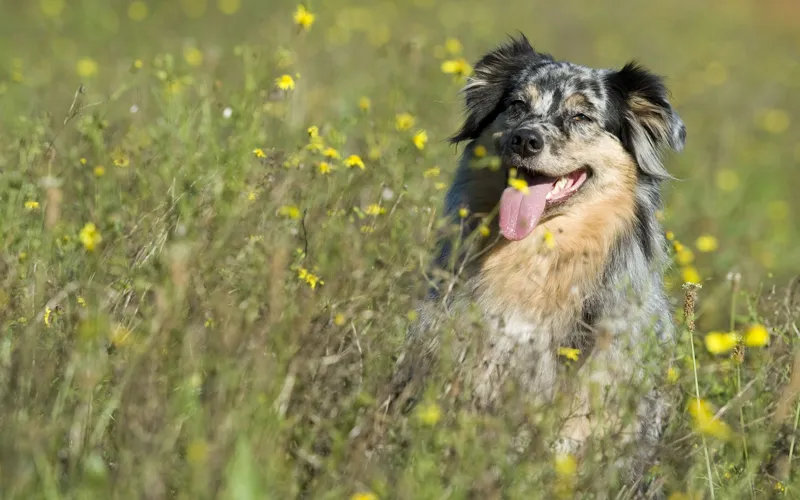
Just a few more meters and we have a new background for three good friends.
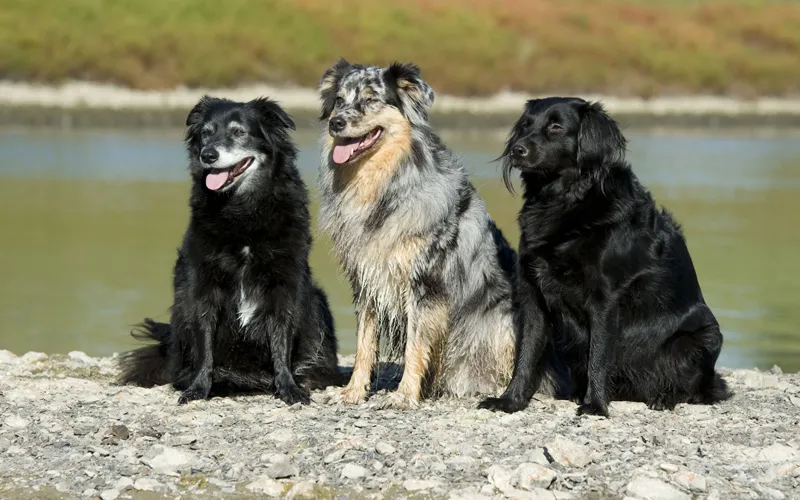
And motion shots are of course also great with these backgrounds!

And there's sand here ... wonderful!!!! Like in Holland by the sea.
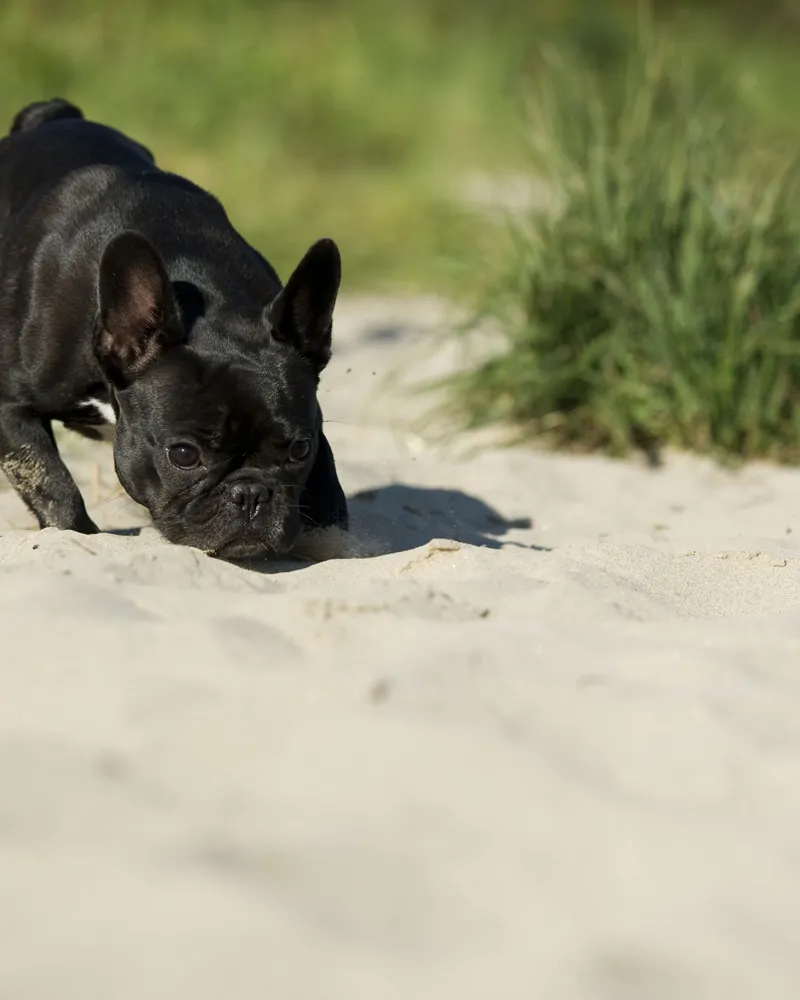
I also fall into a deep hole again and again. I stand still and realize that I photograph the same motifs far too often. You end up just photographing the dog or the horse in the meadow instead of putting more effort into choosing the location and walking through the world with open eyes.
You actually need to have a plan as to which location is particularly attractive at which time of year ... Always try out new things. Shadows, light, snow and sun. That's what life in photography is all about: creativity. Your pictures live from this. Always try out new things and set yourself the goal at the beginning, e.g. to try out a new thing or a new motif in every shoot and not to mechanically work through your 5-6 things that you do in every shoot.
So, you know your model, you know the location and an appointment has been made. Now you can get started.
5. equipment
I won't go into detail about the equipment, we have separate tutorials in this series. But the preparation of your equipment is important!
Make sure you have empty memory cards, a charged battery and batteries for your flash. You should also test your studio lights again and have spare bulbs or batteries for the shutter release etc. to hand in case something breaks in the middle of the shoot.
If you frequently photograph animals, you should have treats for your mice and a little something to animate them. The owner may forget to bring such things.
If you are taking photos outside, especially in bad weather or in the water, remember to bring suitable clothing. Two weeks ago, I was still wearing jeans and sneakers in the Rhine. That didn't go well at all.
A wet shoot, and not just for the handsome Border Collie dog Tylor.
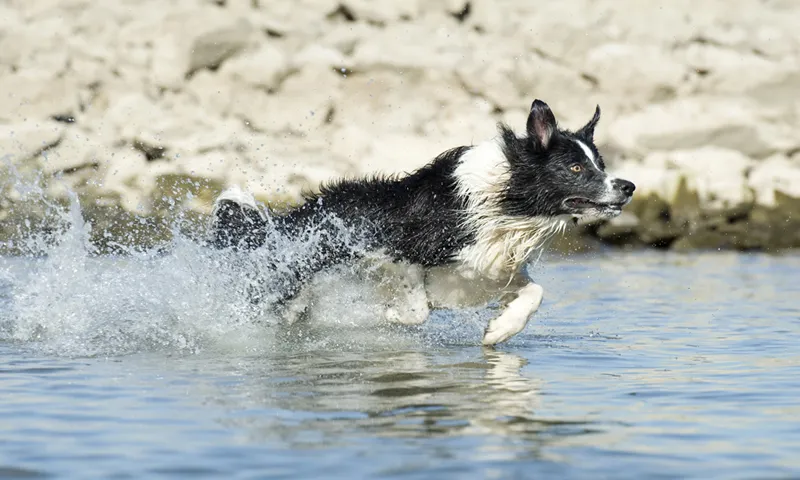
6. instruction owner
The owner of your model has probably never been on a photo shoot before. He probably doesn't know much about photography either. That means you'll need to help him... You also need to create a stable and calm atmosphere for both pet and owner. Because believe me, pet owners are almost always nervous! They want beautiful photos and therefore also want everything to go really well. This in turn is transferred to the animal. So you're dealing directly with two bundles of nerves. I often hear the following phrases: He/she never does that ... Normally he/she can do that ... Actually, he/she is always very calm and balanced ...
Normally we demand different things from the animals than during a shoot. Dogs in particular often get stressed in the studio. They are given commands like "sit" and "stay" and then we lure them with phrases like "look", "hello" etc. to get an attentive expression. We whistle or beep and often the dog naturally thinks this is an invitation to come running. But then his mistress scolds him ... Intervene and explain that the dog is doing everything right. The situation is simply very new and unfamiliar. Take long breaks. Have a coffee with your owner and chat a bit; the dog can also relax during this time.
In the studio, instruct the owner exactly where he is allowed to stand and how he can best animate the animal. In other words, he must not stand in front of the studio flashes when you release the shutter. In most cases, the dog's gaze is glued to the owner, who has to crouch down next to you so that his gaze is as close as possible to the camera.
It is even more difficult with cats. If you don't manage to animate the cat with the feather duster yourself, the owner has to do it. He needs guidance for this. Where should they stand and how should they use the duster to direct the cat's gaze correctly? This requires experience. If you are working on a table, the owner must be nearby, especially with babies, to be able to intervene immediately.
It's a little easier outside. The dog can run after its ball and we can take photos of it in action. In between, we put him on the grass and, with a bit of luck, something interesting always happens in the fresh air and we have an attentive dog. When taking movement shots, explain to the owner in great detail (if you don't have another assistant) how to throw the ball and at what distance from the camera so that you can get the perfect shot of the dog. It's not that easy. You will probably have to do it several times. Please consider the weather and the age of the dog. If it's very hot, don't take too many moving shots and always remember to bring water for the dog!
This Border Collie puppy was held by his mistress in the crate (left in the picture).
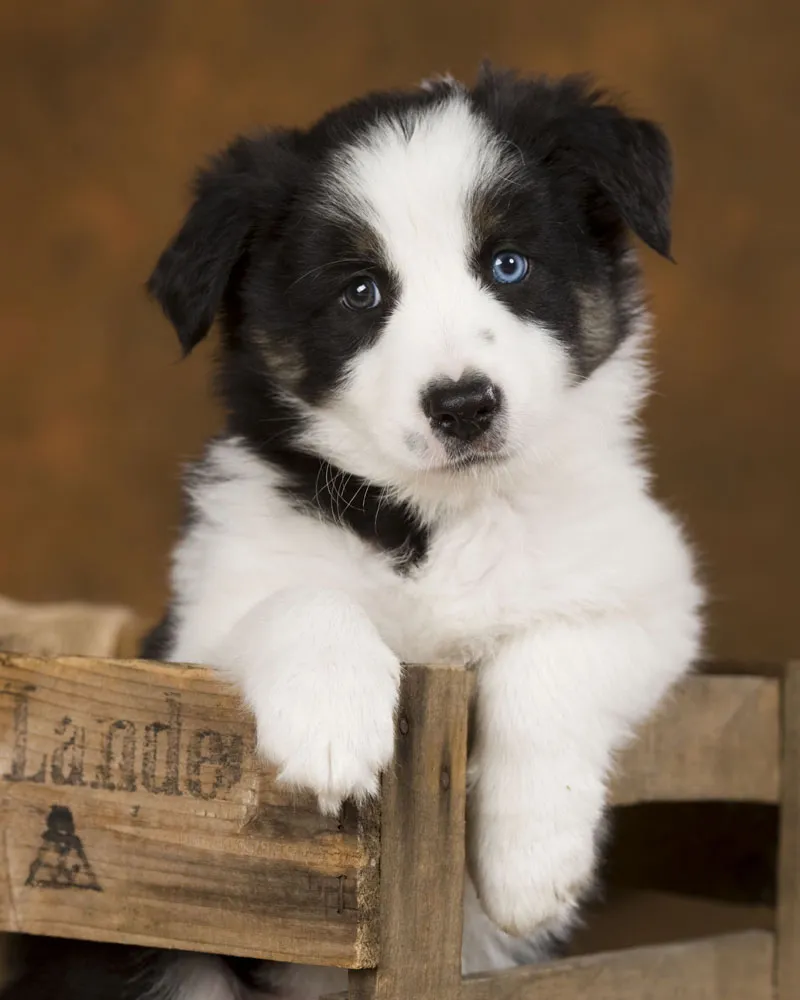
A souvenir:
For the cat ...
You or the owner should have various feather dusters or play fishing rods, valerian or catnip in pillows (I also use valerian root) or as a spray. And treats, of course! If the owner wants a particular accessory in the picture, he can of course also bring it along.
For the dog ...
For movement shots, a ball, frisbee or something similar to animate the dog. Perhaps also a squeaker for studio shots, although many dogs rush straight to it. You would have to test this. The owner usually knows how he will react. Many dogs tilt their heads wonderfully at such noises (you can make them too!!!). Of course we also need treats as a reward! If the owner wants to have a certain accessory in the picture, he can of course also bring it along.
The squeaker works!
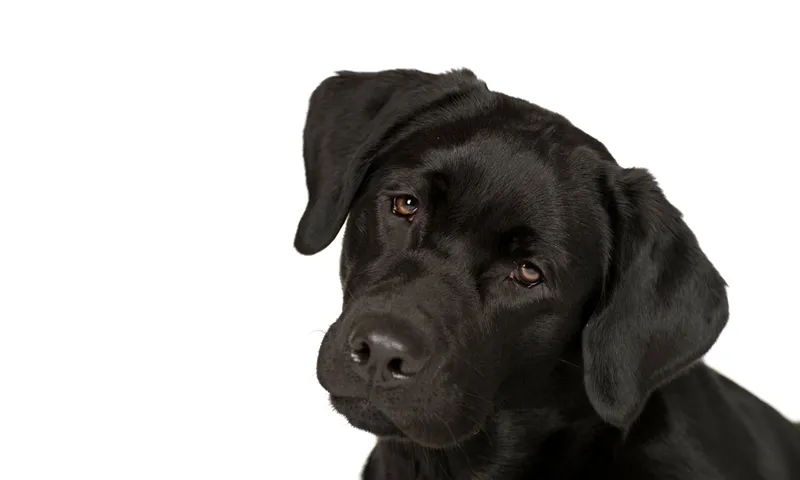
For the horse ...
For movement shots, it is advisable to have 2-3 people to encourage the horse to move. One person will literally run themselves to pieces in large meadows. And you have to take the photos and are no help. In the case of stormy horses, I have someone stand next to me who can send the horses away with a lunging whip if they run too close to me.
Believe me, that sometimes saves lives, laugh. If the owner wants a particular accessory in the picture, he can of course bring it along. Yes! Even with horses. I've already had a Friesian with a BVB scarf and a Haflinger with a Christmas hat.
When taking pictures of horses in motion, especially when there are several horses on the move or neighboring horses in the paddock - be considerate. The "shooing" often causes a total hectic rush, the horses can quickly get into a rage and injure themselves. Some horses go over and through fences and a lot can happen.
It is also your job to make sure that you intervene in time and that no horse overheats and gets too excited. Movement shots are wonderful, but under no circumstances should the horse break its leg. It is also not fair to the other horse owners and it can quickly cause trouble if the neighbors are all suddenly running along excitedly.
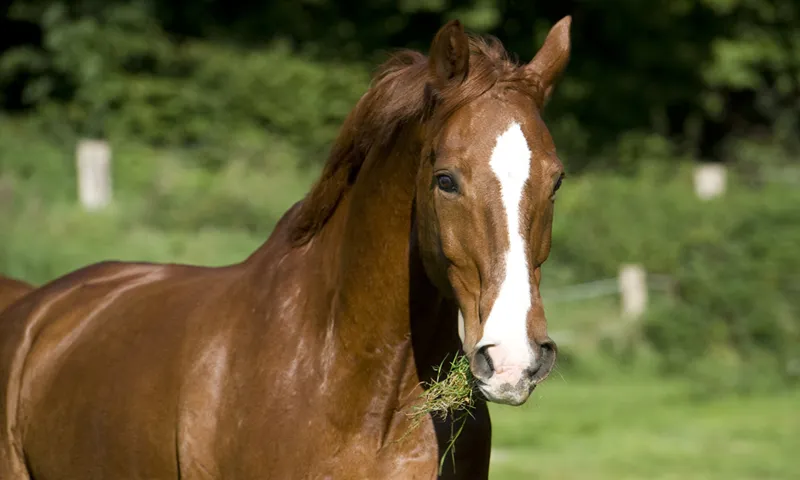
You have done enough research on your model beforehand. You have thought about the location and image composition. The pet owner has been instructed and can assist you perfectly. You are calm and have thought of everything. You convey a sense of calm and security to both the pet owner and the animal. These are the best conditions for a really perfect and successful shoot!
I wish you every success with the realization and hope that the tips could give you some help for your further career as a successful animal photographer!
Best regards
Nicole Schick
